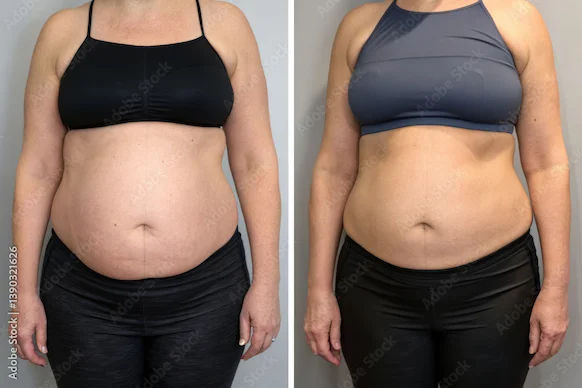Easy Home Remedies for Natural and Safe Weight Loss
Discover evidence-based home remedies for weight loss and safe fat burning. Simple tips on meals, drinks, sleep, and movement you can start today.


Introduction: Why safe, natural weight loss matters
If you’re looking for weight loss remedies you can trust, you’re not alone. Fad diets and quick fixes often promise fast fat burning, but they rarely last—and some can be unsafe. The good news: simple, evidence-based home remedies and everyday habits can help you lose weight safely, support your health, and keep the results. This guide shares practical tips you can do at home, with clear steps backed by reputable health organisations.
What really drives weight change?
Healthy weight loss comes down to steady, sustainable habits:
- A calorie deficit: consistently taking in slightly fewer calories than you use leads to weight loss.
- Food quality: high-fibre, minimally processed foods and enough protein help you feel full on fewer calories.
- Movement: regular activity and strength training increase daily calorie use and help maintain muscle.
- Sleep and stress: both influence hunger hormones and cravings, affecting how much you eat.
There’s no single food or supplement that melts fat on its own. But a set of simple, repeatable home strategies can make fat burning more likely while protecting your energy, mood, and health.
Consult a Top Dietitian for Personalised Advice
Evidence-based home remedies you can do in your kitchen
Home remedies for weight-loss present around you and kitchen include:
Build meals around plants and protein
- Fill half your plate with non-starchy vegetables (leafy greens, broccoli, peppers, tomatoes).
- Add lean protein to each meal (beans, lentils, tofu, fish, eggs, yoghurt, poultry). Protein increases fullness and helps preserve muscle during weight loss.
- Include a small portion of whole grains or starchy vegetables (oats, brown rice, quinoa, sweet potatoes).
- Use healthy fats in modest amounts (olive oil, nuts, seeds, avocado) for flavour and satisfaction.
Why it works: Protein and fibre slow digestion and help control appetite, making it easier to maintain a calorie deficit without feeling deprived.
Try the plate method for easy portions
At lunch and dinner:
- 1/2 plate of vegetables
- 1/4 plate protein
- 1/4 plate whole grains or starchy vegetables
- Add a small amount of healthy fat
This visual guide helps with portions without counting every calorie.
Choose fibre-rich foods every day
Aim to include:
- Oats, barley, beans, and lentils (great sources of soluble fibre)
- Fruits like berries, apples, pears, and oranges
- Vegetables like broccoli, carrots, Brussels sprouts, and leafy greens
- Nuts and seeds (chia, flax, almonds)
Fibre supports fullness, digestive health, and can help reduce overall calorie intake.
Prep and plan at home to prevent last-minute choices
- Batch-cook whole grains and beans for quick bowls and salads.
- Wash and chop vegetables in advance.
- Keep healthy snacks ready (fruit, yoghurt, nuts).
- Plan 3–4 simple dinners you can rotate.
Flavour smart
Herbs, spices, citrus, garlic, onions, and vinegar add taste with few calories. This helps you enjoy meals without relying on added sugars or excessive butter and oils.
Smart drinking for safe fat-burning support
Make water your default drink
- Start your day with a glass of water.
- Keep a water bottle visible to prompt sipping.
- Drink a glass of water 20–30 minutes before meals to help manage appetite.
Hydration supports energy, digestion, and can prevent mistaking thirst for hunger.
Replace sugary drinks
Sugary beverages add many calories without fullness. Swap soda, sweetened teas, and many coffee drinks for:
- Water (plain or sparkling)
- Unsweetened tea (green, black, herbal)
- Black coffee or coffee with a splash of milk (mindful of caffeine and added sugars)
Be mindful of caffeine and alcohol
Let us see how alcohol and caffeine affect the weight loss
- Caffeine can slightly boost alertness and may reduce appetite for some, but too much can disrupt sleep. Keep daily intake moderate and avoid late-day caffeine if it affects sleep.
- Alcohol adds calories and lowers inhibitions around food. If you drink, do so in moderation and avoid sugary mixers.
Movement you can do at home (no gym required)
Get more daily steps and light movement
All movement counts. Try:
- Short walk breaks (5–10 minutes) throughout the day
- Taking phone calls while walking
- Light housework or yard work
- Using stairs when possible
These activities increase your non-exercise activity (NEAT), which can meaningfully boost daily calorie use.
Aim for weekly activity goals
The weekly activity goals include:
- Moderate-intensity aerobic activity: about 150 minutes per week (for example, 30 minutes on 5 days). Brisk walking, cycling, dancing, or low-impact workouts all qualify.
- Muscle-strengthening: 2 or more days per week. At home, try bodyweight moves like squats, wall sits, lunges, push-ups (on knees or elevated), glute bridges, planks, and resistance band exercises.
Strength training helps maintain muscle, which supports your metabolism during weight loss.
Make it easy to stick with
The easy routine includes:
- Schedule an activity like an appointment.
- Keep shoes and a mat by the door.
- Use short, doable workouts (10–20 minutes) on busy days.
- Track steps or sessions to see progress.
Sleep, stress, and routine: the silent drivers of appetite
The silent drivers of appetite include:
- Aim for 7–9 hours of sleep. Short sleep can increase hunger and reduce willpower.
- Keep a consistent sleep schedule and calming pre-bed routine (dim lights, screens off, gentle stretching).
- Manage stress with brief, repeatable tools: 5 minutes of deep breathing, a short walk, journaling, or a call with a friend.
- A predictable meal pattern (for example, 3 meals and 1 planned snack) can prevent overeating caused by long gaps without food.
Simple tracking and environment tweaks
Track what matters (lightly)
Use a food diary or app for a week to spot patterns.
- Weigh yourself once a week at the same time of day, or track waist measurements, energy, and how clothes fit.
- Celebrate non-scale wins: better sleep, improved mood, more stamina, healthier blood pressure or glucose (as advised by your clinician).
Shape your environment
It includes:
- Keep fruit, chopped vegetables, or yoghurt at eye level in the fridge.
- Portion snacks into small containers instead of eating from the package.
- Use smaller plates and bowls to naturally reduce portions.
- Store sweets and chips out of sight or skip buying them if they trigger overeating.
A gentle, realistic pace for safe results
The realistic result looks like
- Safe, sustainable weight loss is typically about 1–2 pounds (0.5–1 kg) per week.
- Expect normal fluctuations in water, sodium, and hormones.
- Consistency beats perfection. Focus on small daily actions you can keep doing.
Sample one-day home plan (mix and match)
A sample one-day plan looks like:
Breakfast
- Greek yoghurt or soy yoghurt with berries, a spoon of chia or oats, and cinnamon
Or: - Veggie omelette with a slice of whole-grain toast and avocado
Lunch
- Big salad: mixed greens, chickpeas or grilled chicken, tomatoes, cucumbers, peppers, olive oil + lemon dressing, and a scoop of quinoa
Or: - Whole-grain wrap with hummus, turkey or tofu, lettuce, tomato, and a side of fruit
Snack (if hungry)
- An apple and a handful of nuts
Or: - Carrot sticks with hummus
Dinner
- Stir-fry: tofu or shrimp with broccoli, snap peas, and peppers over brown rice or cauliflower rice
Or: - Baked salmon, roasted sweet potato, and a tray of roasted vegetables
Drinks
Water throughout the day; unsweetened tea or black coffee earlier in the day
Safety: When to get medical advice
Check with your healthcare provider before starting a weight-loss plan if you:
- Have diabetes, heart, kidney, or liver disease, or a history of eating disorders
- Take medications that affect appetite, blood sugar, or fluid balance
- Are pregnant, breastfeeding, or planning pregnancy
- Have significant weight changes without trying
A clinician or registered dietitian can help tailor these home remedies to your needs.
Conclusion
Safe weight loss doesn’t rely on extreme diets or expensive supplements — it comes from small daily habits you can repeat. By choosing filling foods, drinking more water, and staying active in simple ways at home, you create a gentle calorie deficit without feeling deprived. Prioritising sleep and stress management helps keep hunger hormones balanced, making it easier to stay consistent. Focus on repeatable routines rather than perfection. When you build habits that fit your real life, weight loss becomes sustainable — and so does your wellbeing.
Consult a Top Dietitian for Personalised Advice
Consult a Top Dietitian for Personalised Advice

Ms. Sreeparna Dey Dhara Deb
Dietician
10 Years • DNHE
Bansdroni
Siddhita Healthcare., Bansdroni

Ms. Soma Saha
clinical nutrition
17 Years • B.Sc. - Home Science (Food & Nutrition), M.Sc. - Home Science (Food & Nutrition)
Kolkata
Dr Utsa Basu Clinic, Kolkata
(50+ Patients)

Ms. Samapti Maity
Dietician
16 Years • MSc. (Clinical Nutrition & Dietitics), NDEP, Course in Maternal Infant Young Child Nutrition.Diploma in Sports Nutrition, Diploma in Diabetic educator, FODMAP Specialist
Kolkata
BIENETRE CLINIC, Kolkata

Ms. Sushma Jaiswal
Dietician
42 Years • M.Sc.(Food & Nutrition)
Bengaluru
Swasthya Nutrition, Bengaluru

Ms Manisha Patil
Dietician
25 Years • B.A.S.M., M Sc Food & Science and Nutrition , ADND. CCHA . PGDHM
Pune
Apollo Clinic, Nigdi, Pune
Consult a Top Dietitian for Personalised Advice

Ms. Sreeparna Dey Dhara Deb
Dietician
10 Years • DNHE
Bansdroni
Siddhita Healthcare., Bansdroni

Ms. Soma Saha
clinical nutrition
17 Years • B.Sc. - Home Science (Food & Nutrition), M.Sc. - Home Science (Food & Nutrition)
Kolkata
Dr Utsa Basu Clinic, Kolkata
(50+ Patients)

Ms. Samapti Maity
Dietician
16 Years • MSc. (Clinical Nutrition & Dietitics), NDEP, Course in Maternal Infant Young Child Nutrition.Diploma in Sports Nutrition, Diploma in Diabetic educator, FODMAP Specialist
Kolkata
BIENETRE CLINIC, Kolkata

Ms. Sushma Jaiswal
Dietician
42 Years • M.Sc.(Food & Nutrition)
Bengaluru
Swasthya Nutrition, Bengaluru

Ms Manisha Patil
Dietician
25 Years • B.A.S.M., M Sc Food & Science and Nutrition , ADND. CCHA . PGDHM
Pune
Apollo Clinic, Nigdi, Pune
More articles from Weight Loss
Frequently Asked Questions
What are the best weight loss remedies I can do at home without buying supplements?
Build each meal with vegetables, protein, and fibre-rich carbs; replace sugary drinks with water; walk daily and add 2 days of strength training; get 7–9 hours of sleep; and use simple tracking (food diary and weekly weigh-in). These home remedies work together to support a steady calorie deficit and healthy fat burning.
Do “fat-burning foods” really work?
No single food burns fat on its own. Some foods (high-protein, high-fibre, minimally processed) help you feel full with fewer calories, making weight loss easier. Spices, tea, and coffee can add flavour or modestly affect appetite, but the overall pattern of eating and activity matters most.
Is green tea or coffee good for weight loss?
Unsweetened green tea and black coffee are low in calories and can replace sugary drinks. Caffeine may slightly reduce appetite and boost alertness, but its effect on weight is small. Avoid excessive caffeine and don’t rely on beverages alone for weight loss.
How fast is it safe to lose weight?
About 1–2 pounds (0.5–1 kg) per week is a common, safe pace for most adults. Faster loss can be hard to maintain and may increase the risk of regaining weight. Focus on habits you can stick with long-term.
Should I skip meals or cut out entire food groups?
Skipping meals can backfire by increasing hunger later. Cutting out whole food groups isn’t necessary for most people and can make diets hard to follow. Balanced meals with plenty of vegetables, adequate protein, fibre-rich carbs, and healthy fats are usually easier and safer to sustain.




